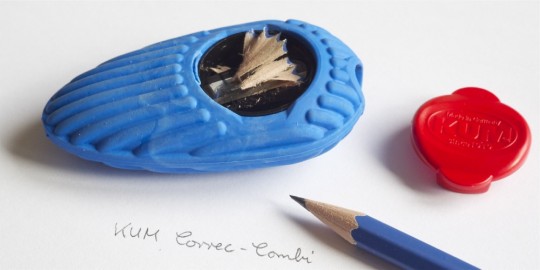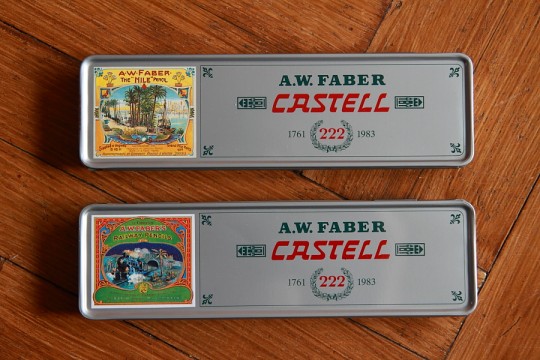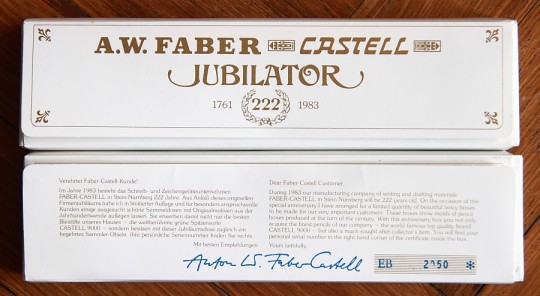Staedtler Noris 120

In a previous blog post I compared three Staedtler tradition 110 pencils, made in three different factories – the one in Wales, the one in Australia and the one in Germany. Today I want to look at three different Staedtler Noris 120 pencils – made in Malaysia, Wales and Germany. I bought a dozen of the Malaysian Noris in March 2010 for £2.24 (~ $3.40; €2.78) from a Malaysian seller on eBay.
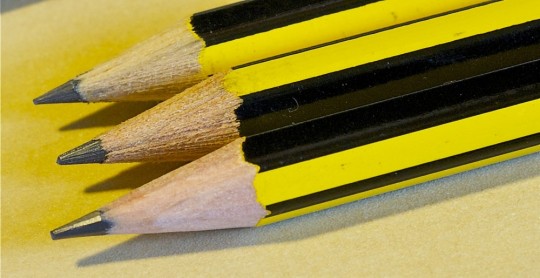
The only pencil from this comparison that is still in production is the Nuremberg-made Noris. The factory in Malaysia closed down two years ago and the factory in Wales closed down four years ago. You can still find Welsh-made pencils in the UK, but there are very few shops left that still have stock. I am not sure about the situation in Malaysia, but I assume most of the Malaysian Noris are also sold by now. In a previous blog post I mentioned that 2B is the most common pencil grade in Malaysia. It is so popular in Malaysia that the Malaysian Noris is only available in 2B, therefore I’ll compare it with the Welsh and German Noris in 2B.

The colour of the Noris cap normally indicates the pencil grade. The HB Noris has a red cap. Strangely enough the cap colour is not consistent. The older Welsh and Malaysian 2B Noris have black caps, while the newer German Noris, bought in April 2012 at Müller in Volkach, Germany for €0.59 (~ $0.73; £0.47), has an orange cap, similar, but a slightly lighter in colour than the orange cap of a Welsh Noris B.

Which eraser could be most suitable to sharpen a Noris? None other than the Staedtler Noris sharpener, of course. Bought at Currys / PC World in Preston, when they tried to get rid of their stationery in December 2011 this sharpener was part of a ‘study set’ that came with 2 Noris HB, one Staedtler Mars plastic eraser and the Staedtler Noris sharpener for £1.17 (~ $1.79; €1.45). The blister pack says “Made in Germany”, but the wedge sharpener in the Noris sharpener is made in China, or at least the the metal body of the sharpener inside is. I wonder why Staedtler put a metal sharpener in there. Most people probably wouldn’t notice and Staedtler sells plastic sharpeners with the same form factor that could have been used in the Noris sharpener to keep the price down…

The bottom of the metal sharpener 510 10 in the Noris sharpener features a ‘W’, which indicates that this sharpener is one of Staedtler’s newer sharpeners, optimised for use with the Wopex. It has a sharpening angle of 23°. The thickness of the shavings produced by the Wopex-optimised sharpener is the same as the one by the older model, usually just under 0.3 mm. I assume the difference is in the way the blade has been sharpened.

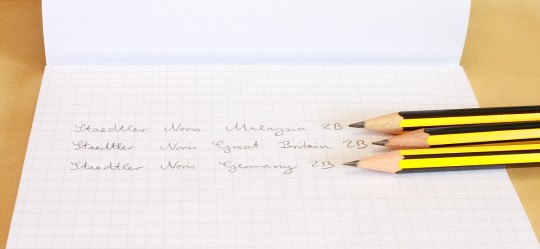 I used a notepad from Brunnen [1]bought in August 2011 at McPaper in Schweinfurt, Germany for €1.19 (~ $1.46; £0.96) to compare the different leads in terms of smoothness, reflectiveness, darkness, erasability, graphite transfer to another page and how long they keep the point. As far as I can tell the three different Noris perform very similar. The graphite from the Malaysian Noris might transfer a bit easier to another page, e.g. in a diary, but it’s only every so slightly worse than the other two Noris pencils.
I used a notepad from Brunnen [1]bought in August 2011 at McPaper in Schweinfurt, Germany for €1.19 (~ $1.46; £0.96) to compare the different leads in terms of smoothness, reflectiveness, darkness, erasability, graphite transfer to another page and how long they keep the point. As far as I can tell the three different Noris perform very similar. The graphite from the Malaysian Noris might transfer a bit easier to another page, e.g. in a diary, but it’s only every so slightly worse than the other two Noris pencils.

In terms of exterior appearance the Welsh and German Noris are nearly on par, with the paint on the Noris from Nuremberg being slightly more even. The paint of the Malaysian Noris is however much worse, but still better than the no name or own brand pencils you usually get in super markets. The Welsh Noris has a diameter of 7mm, which is slightly more than the 6.9mm the Malaysian and German pencils have.
For me the Noris is THE typical pencil. Previous blog posts showed the Noris being featured on TV. Today I want to add two more screen shots. One from Episodes, where Sean Lincoln (played by Stephen Mangan [2]…who recently, as Dirk Gently, used a Faber-Castell Grip 2001 ) is using a Stadtler Noris in the USA, even though it isn’t officially on sale in the USA. The character must have brought it from the UK, the desk is full of Noris pencils ..or, in the real world, this scene might have been filmed in the UK.

The other screen shot is from episode 705 “Liebeswirren” of German/Austrian/Swiss crime TV series Tatort. One of the actors in this episode from Munich was Christoph Waltz of Inglourious Basterds fame.
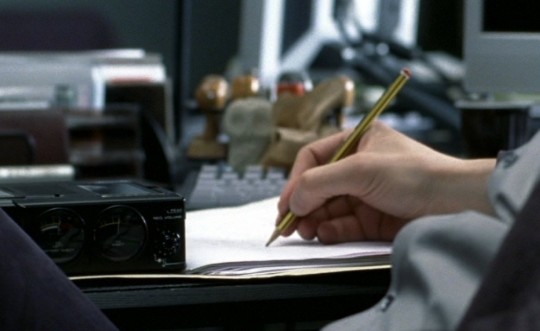
Exchange rates: June 2012.
I believe that the use of the following images falls under “fair dealing” as described by the UK Copyright service:
- The screen shot of Stephen Mangan and the Staedtler Noris, taken from episode three of the second season of the TV series Episodes
- The screen shot of Udo Wachtveitl and the Staedtler Nori, taken from the Tatort #705 Liebeswirren
References
| ↑1 | bought in August 2011 at McPaper in Schweinfurt, Germany for €1.19 (~ $1.46; £0.96) |
|---|---|
| ↑2 | …who recently, as Dirk Gently, used a Faber-Castell Grip 2001 |
Staedtler Noris 120 Read More »



